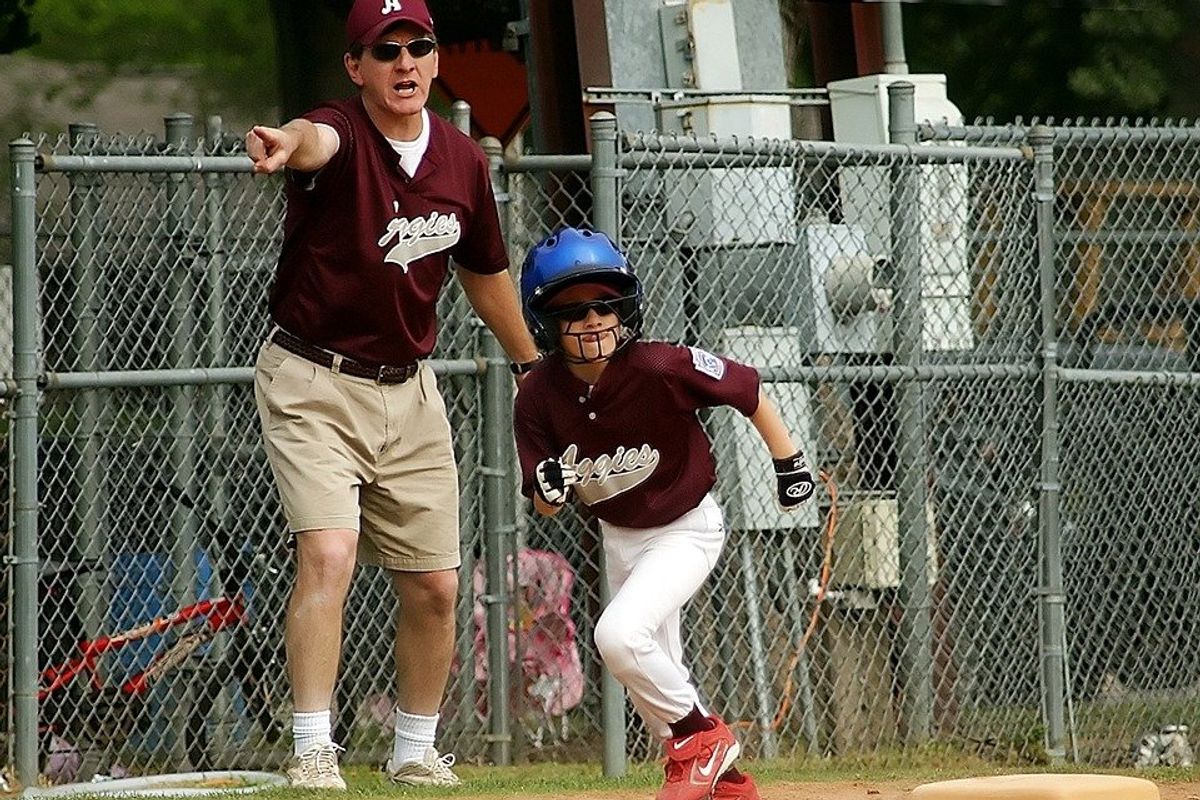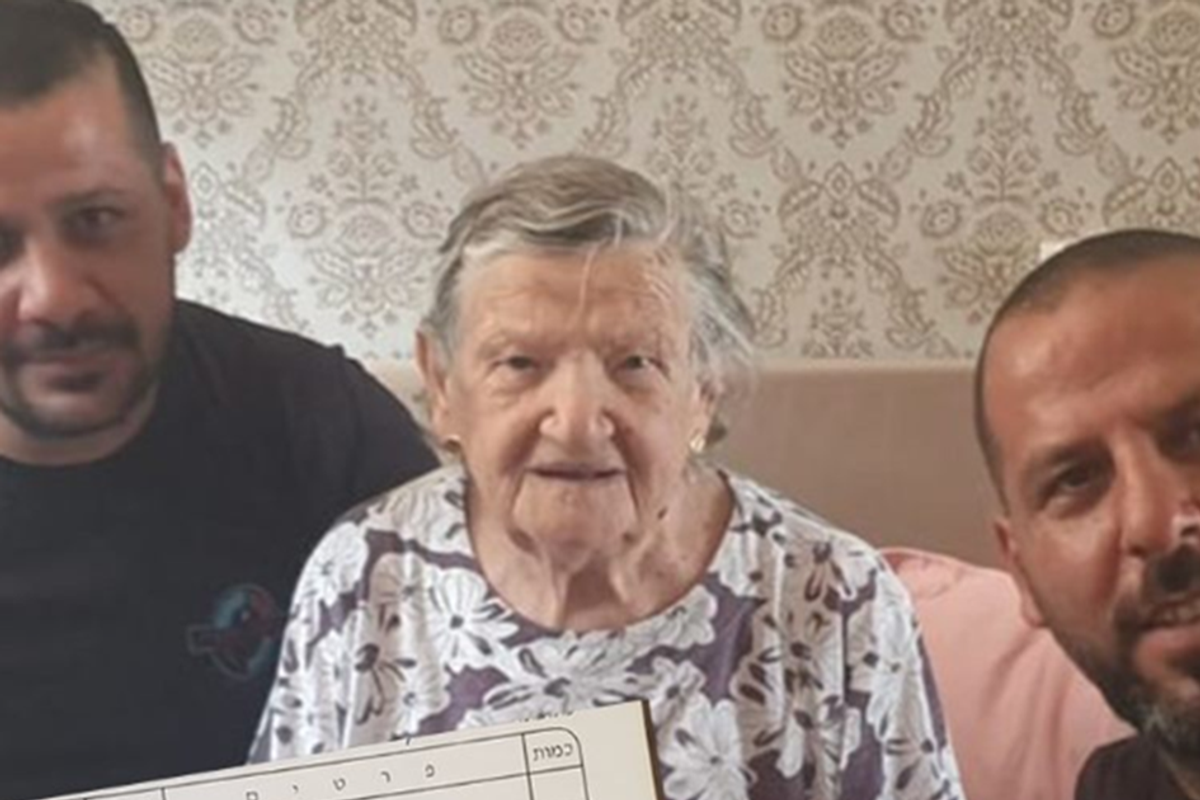New Jersey town has the perfect new rule to stop parents from yelling at Little League umpires
"They're not baseball players, they're children."

A base coach tells a Little Leaguer to run home.
Parents who misbehave at their kids’ sporting events have become so commonplace that it’s forced sports psychologists to come up with a name for the behavior: Little League Parent Syndrome (LLPS).
Parents with LLPS are known for sitting in the stands and verbally abusing other players, parents, referees and umpires during games. This behavior has led to a decrease in the number of umpires and referees in youth sports because volunteers aren’t willing to subject themselves to harassment.
“There has been a huge drop off in the number of available referees and officials in youth sports due to the obnoxious behavior of parents,” says Rick Wolff, a sports-parenting expert, author, and 20-year host of the WFAN radio’s “The Sports Edge,” told The Washington Post.
So what has driven parents to such extreme behavior?
There are many different ways for a parent to be infected by LLPS. One of the biggest reasons is pure narcissism. Parents see their children as part of their identity, so if their kids lose, they feel like they lost, too.
“They often judge the child’s performance as an indication of how good of a parent they are,” Coach and Play Baseball says. “If Johnny hits a home run then ‘I must be a good parent.’ If Johnny strikes out, ‘Then I am embarrassed and I’m going to lay into him for embarrassing me.’”
Youth sports have also become more competitive because many parents see them as a potential road to lucrative college scholarships or professional contracts. Although, the truth is that only 0.3% of high school athletes will ever get a full-ride scholarship to a university.
In fact, many parents wind up spending more money chasing scholarships than their kids would have received if they ended up getting one.
A New Jersey youth baseball organization has found a unique way to combat parents with LLPS who harass umpires. The new rule states: If you fight with the umps during a game, you have to volunteer your time to umpire three games before you're allowed back as a spectator.
Parents who are forced to umpire will not do so alone. They will be paired with a certified umpire to ensure their calls are correct.
Deptford Township Little League President Don Bozzuffi hopes that when abusive parents become umpires, they’ll learn that things look a lot different behind the plate than they do from the stands.
"The main purpose is not for them to be able to call a baseball game, but for them to see what's going on out here, and it's not that easy," Bozzuffi told ABC 30. "They think that the call was bad, which always amazes me that they can see a strike better over there than the umpire can one foot in back of them," Bozzuffi added.
Ultimately, it’s all about creating a positive environment for kids that overzealous parents can't ruin. "They're not baseball players, they're children. So always keep that in the back of your mind and let them play," said Bozzuffi.
- Parkland parents respond to Marjorie Taylor Greene's mass shooting conspiracy theories ›
- Everyone should know about ‘Toni’ Stone, the first woman to play pro baseball ›
- When this young hockey player was bullied by racists, his hero sent him an inspirational message. ›
- Mom's passionate rant about why she was late to school drop-off has parents rolling - Upworthy ›
- Mom believes that youth sports have changed - Upworthy ›
- Video shows mom practicing football with her son in work clothes - Upworthy ›
- Mom has the 'my bad' hack to stop screaming at kids - Upworthy ›
- Mom points out the unspoken, 'unfair' part of having kids who travel for sports - Upworthy ›
- Mom's divisive comments highlight the 'unfair' part of having kids who travel for sports - Upworthy ›



 TikTok · Ale
TikTok · Ale
 Autumn created this piece when she was just 5 years old.Autumn de Forest
Autumn created this piece when she was just 5 years old.Autumn de Forest  Autumn de Forest paints Autumn de Forest
Autumn de Forest paints Autumn de Forest  An Autumn de Forest paintingAutumn de Forest
An Autumn de Forest paintingAutumn de Forest 
 Autumn de Forest stands with the Pope who looks at one of her paintings Autumn de Forest
Autumn de Forest stands with the Pope who looks at one of her paintings Autumn de Forest 
 The Memorial to the Murdered Jews of EuropeBy Alexander Blum - Own work, CC BY-SA 4.0
The Memorial to the Murdered Jews of EuropeBy Alexander Blum - Own work, CC BY-SA 4.0 Move over, Mario Brothers.
Move over, Mario Brothers. 


 "Hold it" is not an appropriate response to a teen getting her period.
"Hold it" is not an appropriate response to a teen getting her period. We Tried To Not Leak On Our Period For A Week GIF by BuzzFeed
We Tried To Not Leak On Our Period For A Week GIF by BuzzFeed  . If a male teacher said this I would be absolutely mortified, you should definitely complain!"
. If a male teacher said this I would be absolutely mortified, you should definitely complain!" Cramps and other discomfort are already hard enough to deal with when you have your period.
Cramps and other discomfort are already hard enough to deal with when you have your period. Hopefully it wasn't a biology teacher.
Hopefully it wasn't a biology teacher.